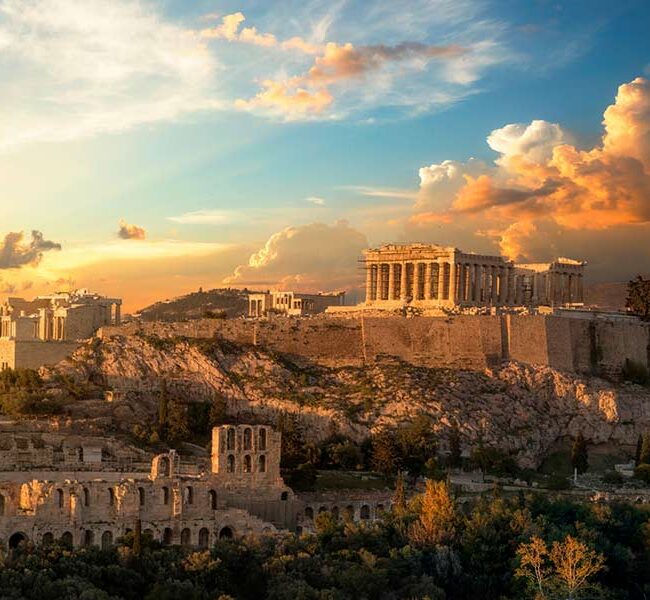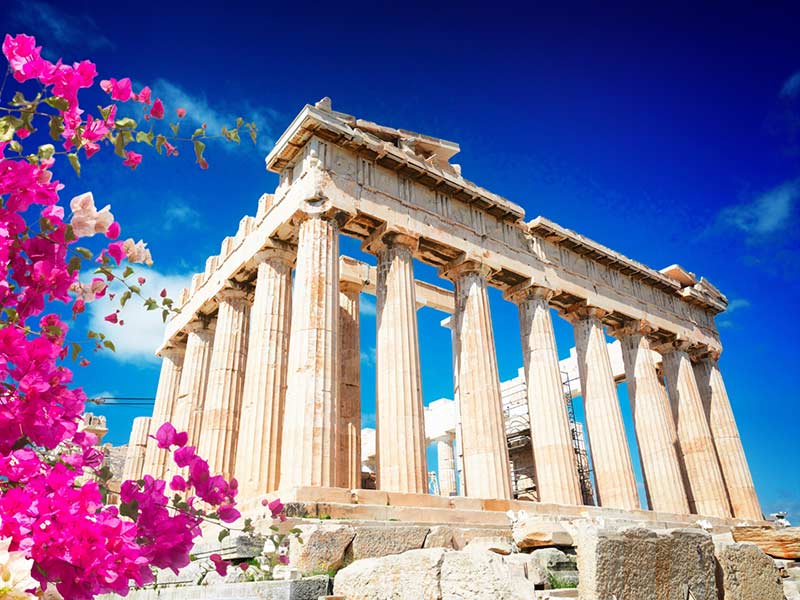Acropolis Athens Parthenon
Welcome to Acropolis Athens Parthenon
The Acropolis and the Parthenon are iconic symbols of Athens. Wherever you are in the city, you can’t miss the grand columns of the Parthenon, the main temple atop the Acropolis.
The Acropolis, meaning “upper town” in Greek, is a limestone plateau standing at an impressive height of 156 meters. It forms the heart of the ancient town and is considered the main attraction of Athens. To enter the Acropolis, you pass through monumental gates that lead you to the Propylaeum. On the left side, you’ll find the Pinacotheca, a gallery, and on the right side, the smallest of the three temples, the Temple of Athena Nike, which is currently undergoing reconstruction. The roof of the portico of the second temple, the Temple of Erechtheion, is supported by famous caryatids – young women sculptures. However, the most awe-inspiring temple in Athens is undoubtedly the Parthenon.
Inside the Parthenon, there used to be a well-known wooden statue of Athena Parthenos, the protector of the city. The statue was adorned with gold and elephant ivory. The Parthenon stands as one of the greatest architectural marvels in the world. The architects took into account the nuances of human eyesight, incorporating a slight curvature to all the building’s surfaces. This deliberate design, along with the varying distances between the columns, creates an impression of perfect harmony, where all the lines appear impeccably horizontal and vertical. The Acropolis is truly enchanting and magnificent, especially in the evening when special lighting enhances its beauty.
The Theatre of Dionysus, situated at the base of the Acropolis, holds the distinction of being the oldest theater in Europe and the birthplace of Greek tragedy. The first performances took place there in the 6th century. Initially, the stage was nothing more than trampled ground, and the audience sat on the grass, forming a semicircle around it. Over time, wooden benches were added, which eventually gave way to stone seats. This change occurred after several wooden benches collapsed, causing numerous fatalities. The theater underwent gradual expansion between 342 and 326 B.C., and after reconstruction, it could accommodate an audience of 17,000 people. Unfortunately, today we can only admire the remains of this legendary theater.
The Temple of Zeus, also known as the Olympion, is located approximately 500 meters south of the Acropolis. Construction of the temple spanned several centuries, finally reaching completion in the 2nd century during the reign of Emperor Hadrian. At that time, the Temple of Zeus stood as the largest building in all of Greece, measuring 96 meters in length and 40 meters in width. It boasted an impressive display of 104 Corinthian columns, each towering at 17 meters. Today, only the ruins of the 15th and 16th columns remain, as General Sulla took two columns to Rome even before the temple’s completion. These columns were intended to adorn the Temple of Jupiter, thereby popularizing the Corinthian style in Rome. Emperor Hadrian dedicated the Greek temple to Zeus and placed an enormous statue of the god inside. This statue, like the Emperor himself, stood at a remarkable height. In close proximity to the temple, you’ll find the 18-meter marble Arch of Hadrian, symbolizing the power of the Emperor. The arch separates the New Rome from the Ancient Rome, with an inscription on the side facing the Acropolis reading, “This is Athens, the ancient city of Theseus,” while the other side proclaims, “This city is not of Theseus, but of Hadrian.”
We invite you to explore these historic wonders and experience the captivating allure of Athens.
-
Destination







